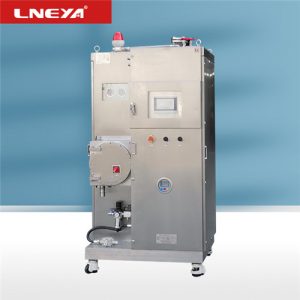Use and maintenance of laboratory/bioengineering temperature control system
1. Read the equipment manual carefully before use, get familiar with the operation process and key instructions, and operate in strict accordance with the conditions specified in the manual.
2. When moving the laboratory/bioengineering temperature control system, avoid striking the equipment shell, vibrating and damaging or polluting the keypad (function key display).
3. Before use, make sure to regularly check (at least once every two years) whether the equipment is in normal working condition.
4. The laboratory/bioengineering temperature control system shall be stored or used in a clean environment with sufficient fresh air to prevent pollution. There is more than 30cm space around, and the ground is flat and firm. Ensure that the input power is properly grounded when using.
5. Before any repair, maintenance or moving the equipment, the equipment must be turned off and the power supply must be disconnected. The tilt angle of the laboratory/bioengineering temperature control system should not exceed 15 degrees when moving. When the laboratory/bioengineering temperature control system needs to move for a long distance, it is necessary to empty the liquid in the equipment and carefully check the pipe connections to ensure that there is no leakage.
6. When selecting the heat conduction medium, pay attention to whether its upper and lower temperature limits, ignition point, viscosity, freezing point, etc. meet the requirements, and whether it is suitable for the use of the internal pipes of the instrument. Use the heat conduction medium specified by the manufacturer and within the specified pressure range.
7. When selecting the heat transfer medium pipe, the length should be as short as possible and the diameter should be as large as possible. If the diameter is too small, it may cause flow restriction. Do not knot the heat transfer medium pipeline of the high and low temperature all-in-one machine, and check it regularly to avoid material strain (such as fission).
8. Regularly check the liquid sight glass on the side of the equipment to confirm whether the liquid level of the heat transfer medium is at the normal position. Regularly replace the thermal conductivity medium of the laboratory/bioengineering temperature control system. If water is mixed with immiscible oil and water, the mixed liquid will expand after heating, and will spray under high temperature, even causing personal injury.
9. The equipment adjustment parameters must be reset after the new heat conduction medium is filled.
The above are technical maintenance and use matters. If you have other information needs about the equipment, you can leave a message to us, or even send an email to sales@lneya.com
Recomendaciones relacionadas
-
Requisitos de seguridad para el control de la temperatura del sistema de vaporización
1784The steaming system temperature control is one of the low temperature refrigerators designed and produced by Wuxi Guanya LNEYA. The temperature range is from -5 °C to -150 °C. The secondary subcooling technology is adopted, the refrigeration is ra...
Ver detalles -
Adding VOCs gas condensate recovery unit market investment to create green power in the industry
1693In recent years, due to the deteriorating atmospheric environment and various environmental problems, people are paying more and more attention to the emission of volatile organic gases in the atmosphere. Volatile organic compounds, also known as ...
Ver detalles -
Importancia de la cámara de baja temperatura
1421La cámara de baja temperatura es un gran dispositivo de ensayo criogénico o de alta criogenia, que normalmente separa el refrigerador de la pieza de ensayo y convierte la pieza de ensayo en un tipo de sala, para que el personal pueda trabajar en ella. Este tipo de sala de pruebas se denomina cámara de baja temperatura.
Ver detalles -
Selection Guide for Laboratory Cooling and Heating Circulator
1690When purchasing laboratory cooling and heating circulator equipment, the key point is to meet production requirements and accelerate production output. Therefore, you need to understand the characteristics of the equipment and technical solutions ...
Ver detalles
 LNEYA Enfriadoras industriales Fabricante Proveedor
LNEYA Enfriadoras industriales Fabricante Proveedor













